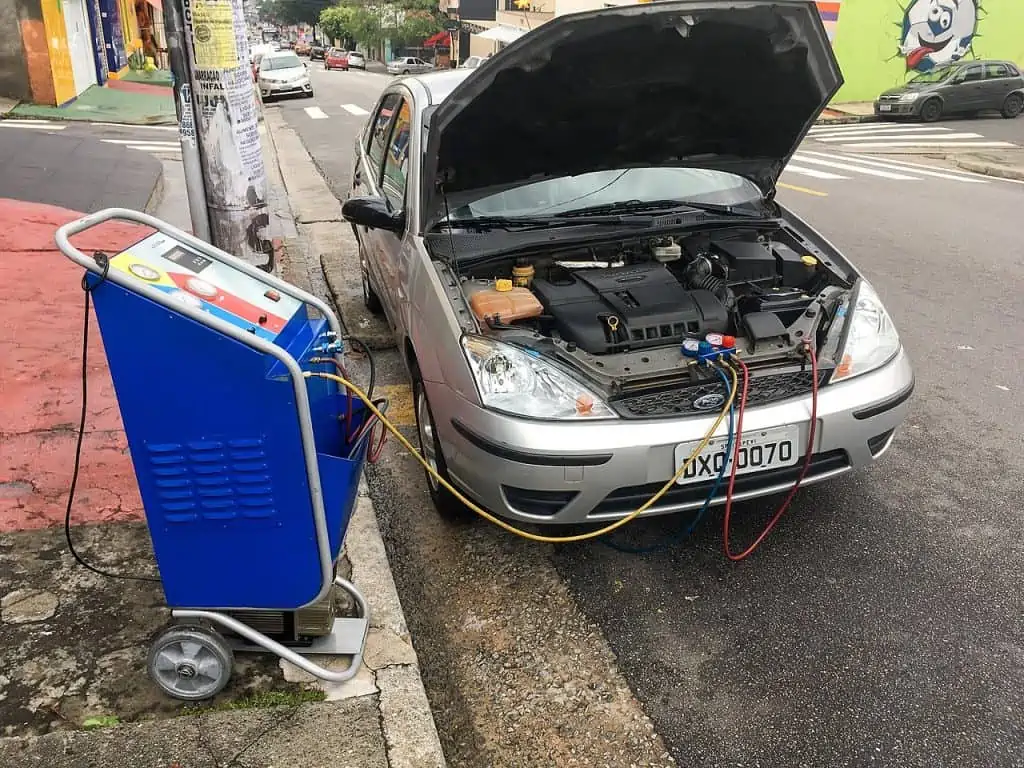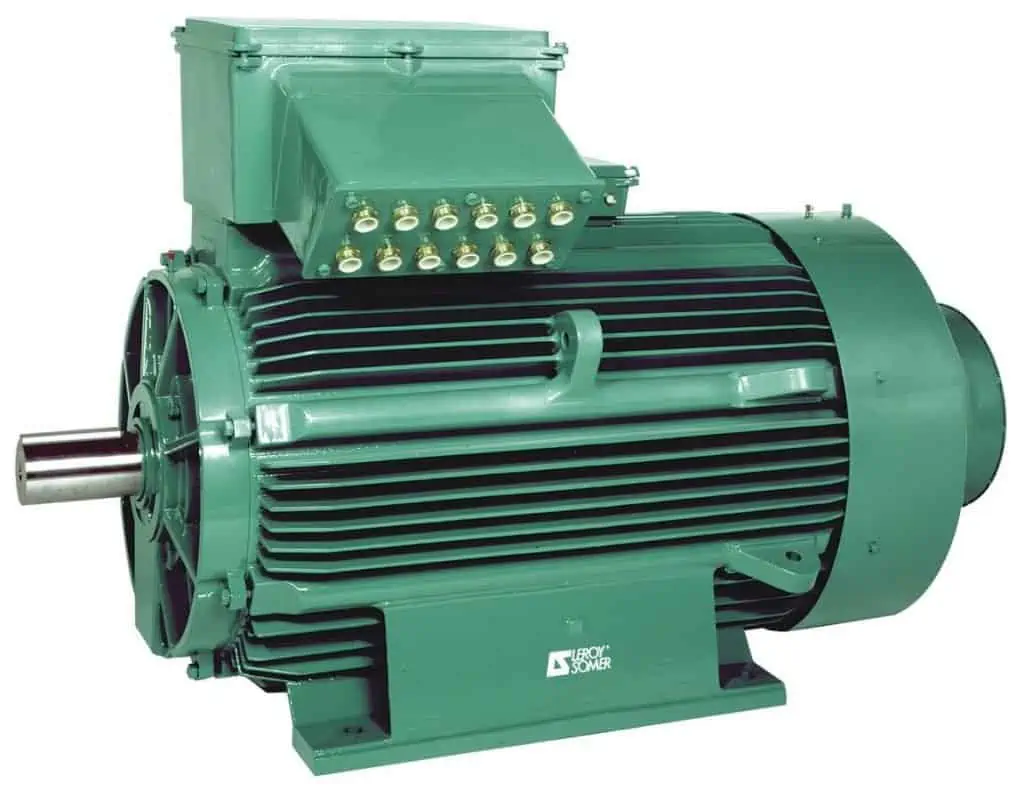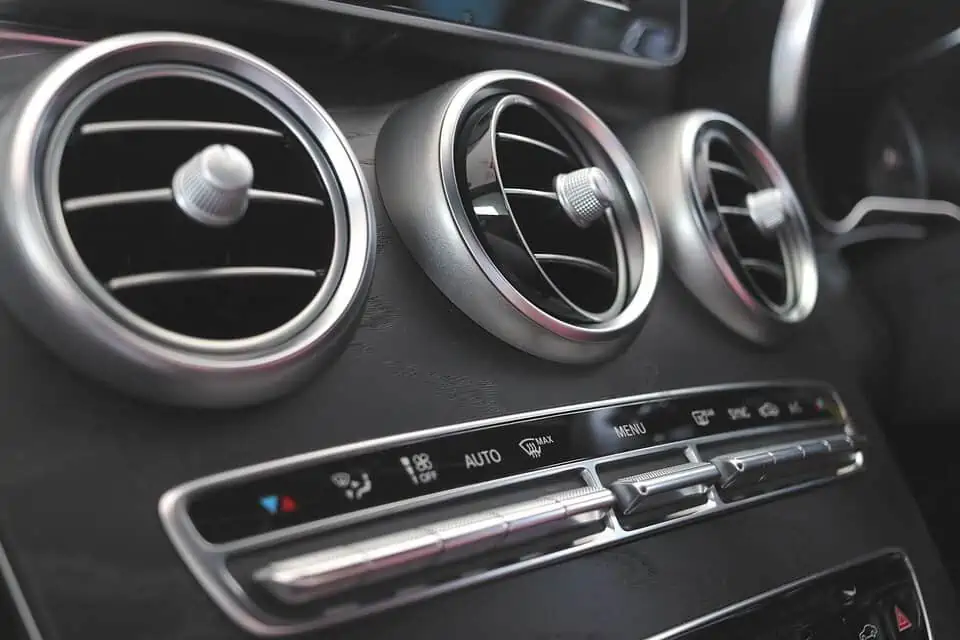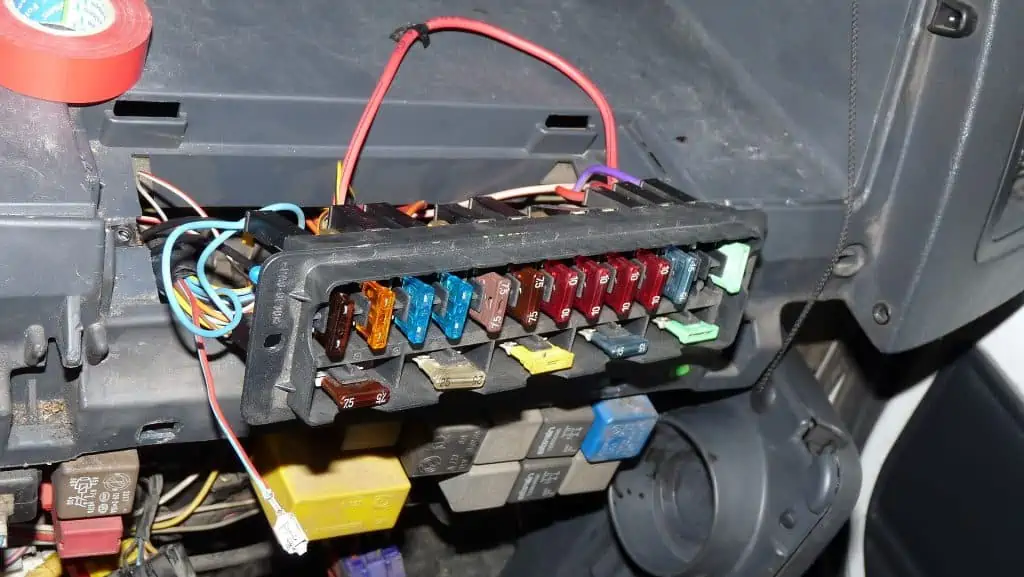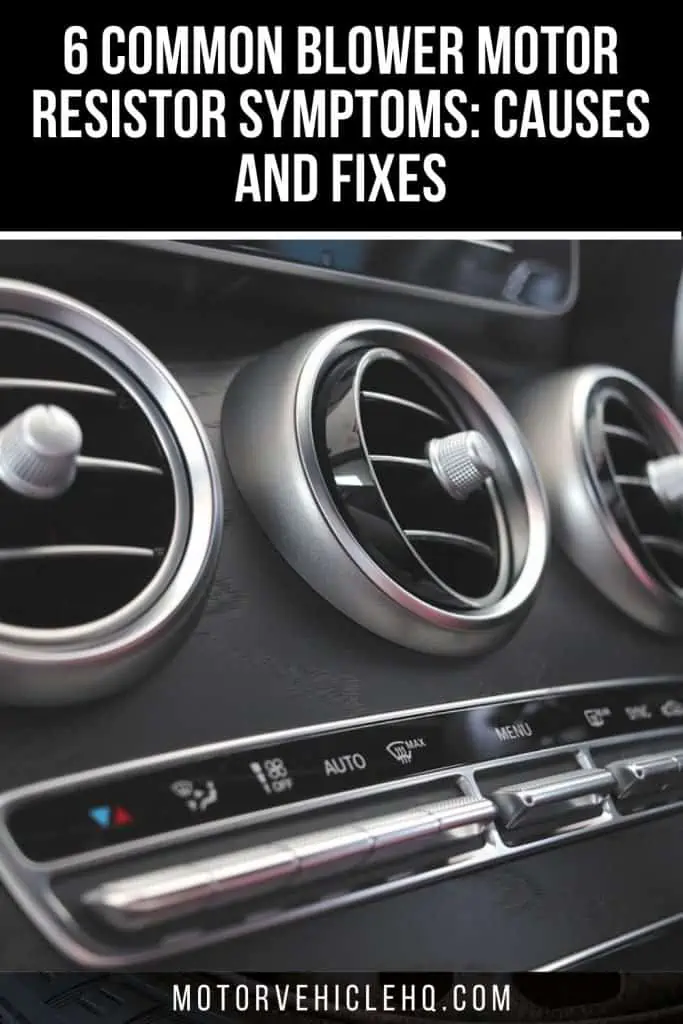One of the most crucial additions a person’s car may have is an air conditioner. On hot days, it helps to prevent your ice cream from melting while you’re driving home from the store and keeps you cool while you’re driving around. Your passengers and you can feel uncomfortable when it goes out.
There are numerous components in your air conditioner. A blower motor is a name for the motor used to drive the fan in an air conditioning system.
Depending on the type and model of your car, it might be positioned everywhere. One of the components of the blower motor is the resistor. The blower motor’s speed is controlled by the resistor.
Blower motor resistors and electronic blower motor control modules are two separate types of resistors. When there are just 4 or 5 fixed speeds on the blower motor, a standard blower motor resistor is used.
Electronic blower motor control modules are standard in vehicles with automatic climate control or those that let the blower speed be gradually changed.
The blower motor resistor or control module can be found in the HVAC ducts, close to the blower motor, in the vast majority of modern cars.
The control module needs to be cooled down, so this is done to allow for that. A blower motor resistor that had to be accessed from underneath the hood was once put on the firewall.
It’s important to understand exactly what the blower motor resistor on your automobile is, where it is, and any potential problems it may be causing.
We’ll go over the specifics of the blower motor resistor as well as some of the most typical issues that motorists run into with it. We’ll also go over what you can do to correct it and how much it will cost to complete the work.
Regassing the air conditioning of a Ford Focus by Mike Peel / CC BY-SA 4.0. When you turn on the heat or air conditioning in your car, a fan propels air into the interior of the vehicle where you are. It seems rather simple, making it one of the auto systems that is most usually taken for granted.
A Blower Motor Resistor: What Is It In a Car?
Every time you switch on the heat or air conditioning in your automobile, a fan blasts the air into the cabin where you are, making it operate. It appears to be quite straightforward, making it one of the systems in your car that is most frequently taken for granted.
After all, a fan is a simple piece of equipment in the eyes of the majority of people. Push the button to start a breeze and some metal blades spin. It’s not at all difficult to grasp.
Any vehicle’s air circulation system is based on the same fundamental idea. When you require heat or air conditioning to operate, a blower motor located in your dashboard behind those vents activates.
It is typically found on the dashboard, on the side opposite the steering wheel. It’s inside the car, so you can’t see it, but that’s where it is.
The component of the blower motor that regulates speed is the resistor. The resistor instructs the blower motor to accelerate and blow more air when you turn up the air conditioner’s knob. The converse occurs when the volume is lowered.
It is an electrical component, and for it to function, electrical impulses must be sent that correspond to the data you provide by turning the dial. The electrical signal changes, which has an impact on the fan’s overall motor speed.
In terms of electrical systems, they are straightforward, but as you can see, if something disrupts the flow of power, problems could arise.
It’s important to keep in mind that the blower motor resistor won’t have any power when the fan is entirely turned off. Many vehicles also skip the motor resistor when the fan is running because it is not necessary at that point to control the flow of power.
Only when the blower motor is halfway between being completely off and operating at full blast does the blower motor resistor need to be used.
Blower motor resistors can experience a few issues that will impair their performance. For instance, a blower motor resistor may deteriorate if moisture enters it.
Corrosion prevents a blower motor resistor from effectively controlling the current, which prevents it from communicating the right commands to the blower motor.
Consequently, it’s possible that you won’t be able to modify the fan’s power. In the worst-case circumstances, your fan won’t function at all because it won’t send any signal at all.
In addition to corrosion, it could also just have mechanical damage, like if you were in an accident and the resistor somehow broke.
Wiring Diagram for a Blower Motor Resistor
A vehicle and resistor connection can be demonstrated via a wiring schematic.
The blower motor can be powered by a fan switch, and the resistor in this automobile has the highest fan speed setting. As a result, even if this resistor is broken, some cars’ motors may still function at full power.
Car AC blower motor by Egzon123 / CC BY-SA 3.0. The resistor, which is a part of the blower motor, controls speed. Turning up the air conditioner’s knob causes the resistor to give the blower motor instructions to speed up and blow more air. When the volume is decreased, the opposite happens.
As seen in the image above, three series-connected resistors (R2, R3, and R4) can be used to lower the current passing through the motor if the fan switch is in the “1” position. A wiring diagram is used to determine how current flows from the power supply to the motor and then to the fan switch.
Similar to this, there are two resistors connected in series when the fan switch is in position “2,” whereas there is just one resistor in position “3.” When resistance is introduced to a circuit, the current flow inside the circuit is decreased.
When numerous resistors are connected in series, the overall resistance will rise and become equal to the sum of the individual resistances.
Which are Some of the Common Problems Likely to Affect the Blower Motor Resistor?
Blower motor resistor problems are common. The heater fan will only run at the highest speed setting and won’t operate at any other speeds, which is the most usual sign of a bad blower motor resistor.
In some automobiles, a damaged blower motor resistor might cause the heater fan to stop working entirely.
A blower motor resistor typically stops functioning due to corrosion or overheating. An excessive electrical current is produced by the mechanical resistance to the motor movement, which could cause the blower motor resistor to overheat and become damaged.
A fan blade with a foreign object inside of it or worn-out motor bearings that can no longer spin freely is two examples of this.
On rare occasions, you could experience problems with a blower motor control module. Although it doesn’t happen as frequently, the same thing causes it to happen. because of corrosion, overheating, or when a foreign object is inside the motor or the motor is shortened.
Typically, the blower motor won’t operate if a blower control module fails. In some older vehicles, a malfunctioning processor or blower control module can cause the blower motor to run even when the ignition is off.
What are the Causes of Failure In the Blower Motor Resistor?
Resistors have difficulties. They are always powered by electricity, and as the blower fan’s power changes, the voltage may alter significantly.
Blower motor resistor failure has the following most likely causes:
- Corrosion is brought on by extended exposure to air and moisture.
- Overheating: A motor that has worn-out bearings or is slowed down may cause the resistor to overheat dangerously.
- Time and use are the main causes of typical wear and tear.
A blower fan mounted on the engine by Morio / CC BY-SA 3.0. If your fan won’t turn off no matter what you do and keeps running whether you try to switch it up, down, or off, it’s a symptom that the blower motor resistor isn’t successfully regulating the electrical current.
Which are the Typical Bad Blower Motor Resistor Symptoms In a Car?
There are a few bad blower motor resistor symptoms you need to look forward to in your car in the event your car has a malfunctioning blower motor resistor. You might need professional assistance to diagnose them because sometimes the symptoms are similar to problems with other systems in your car. These are a few of the most typical warning signs.
1. Lack of Air from the Vents
Even though it may seem simple, one of the most blower motor resistor symptoms to watch out for when trying to get the heater or air conditioner to function is a lack of air coming through the vents.
If there is no air going out at all when you turn the knob or press the button to start the air blowing, the blower motor resistor has probably failed.
If this is the only symptom you’re experiencing, it doesn’t necessarily mean that there aren’t any other issues present as well.
2. Blower Motor Resistor Only Operates At High Speeds
As we previously stated, there are two situations where a blower motor resistor is not required, when the fan is operating at high power or when it is entirely off. Since the current doesn’t need to be modulated in any case at high power, it bypasses the resistor.
Therefore, it is nearly certain that the issue is with the blower motor resistor if you discover that your heat and air conditioning can only switch between being completely off and being on at high power.
3. The Blower Motor Resistor Only Operates At Low Speeds
Given what we just discussed about how the high-speed only functions as a symptom, it seems a little odd to say that when your fan works at low speeds only, it may be a symptom of a broken blower motor resistor.
However, it’s possible that it can only operate at low speeds if there is a wiring problem between the blower motor resistor and the blower motor itself.
4. The Fan Does Not Shut Off
It’s a sign that the blower motor resistor isn’t effectively regulating the electrical current if your fan won’t shut off no matter what you do and keeps running whether you try to switch it up, down, or off.
In some settings, the blower motor is functional, but not in others.
The blower motor ought to have numerous mid-range settings and a variety of settings from low to high.
If you notice that some of those middle settings function properly while others have no effect at all, there is probably a problem with the switch and the way it communicates your desired blower motor setting to the blower motor resistor.
5. Smoke Emanating from the Vents
Although it’s uncommon, this could be one of the bad blower motor resistor symptoms. The blower motor resistor may experience a short of some sort, and if wires begin to melt there, the fan may blow the smoke produced by those wires back into the car’s cabin.
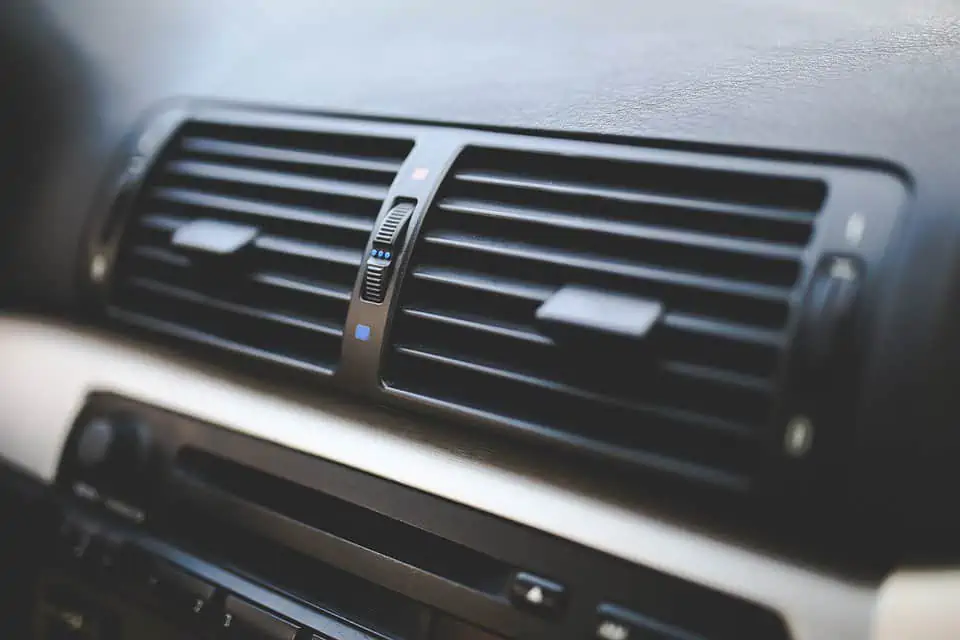
As a general guideline, you should pull over right away and assess the situation if any smoke begins to enter your automobile through the vents. If it’s not the blower motor resistor, it could be something more serious, and you should have that looked at right away.
6. Burning Odor In the Cabin
Similar to the smoking vent problem, occasionally there isn’t real smoke billowing into the car’s interior, but you will still detect the characteristic burning smell that indicates some metal or plastic is scorching inside the car. The other symptoms we’ve already mentioned are frequently accompanied by this.
NOTE: A faulty blower motor resistor is frequently detectable by visual examination. As previously stated, this component is situated on the car’s passenger side, behind the dashboard. Some versions allowed access through the glove box, while others required that the entire dash be taken off.
Because of this, managing this work at home is not always simple. If you’re lucky, if you do gain access to it, you will be able to immediately determine whether the part is corroded because if that is the issue, it should be clear just by looking at it.
If rust is not the issue, you could try attaching an ohmmeter to the blower motor resistor and measuring its resistance to see if the resistor is broken. If it’s functioning properly, it should read between 4 and 5 ohms. A different reading, such as an open circuit, indicates a faulty resistor that needs to be changed.
A blower motor resistor can malfunction due to a malfunctioning blower motor. In situations like this, replacing the blower motor resistor may not solve the problem because the blower motor may still be inefficient and cause the resistor to fail again fast even though it is a new component.
After changing the blower motor resistor, turning on the fan and listening for any audible screaming, grinding, or whirring noises from the blower motor might help you determine whether the worn-out component is to blame.
If so, it will also be necessary to replace the blower motor. If it isn’t changed, it can continue to put a strain on the blower motor resistor, leading to another failure of that component as well.
How Much Does It Cost to Fix Bad Blower Motor Resistor Symptoms By Replacing the Blower Motor Resistor?
One of the less expensive auto parts to replace is a blower motor resistor. You can discover a broad variety of blower motor resistors at AutoZone right now, with prices ranging from $12 to $50 or $60. Overall, that’s not too bad in terms of automobile components.
Depending on where you reside, what kind of automobile you drive, and how much labor is involved, the cost of repairing and replacing the blower motor resistor will change.
You should prepare yourself for higher-than-average repair bills if you drive an older car or something a little more unique.
If you’ve ever needed something fixed and gotten quotes from different shops around town, you’ve probably also seen that one mechanic may charge nearly twice as much as another mechanic for the same service. It depends on the type of work being done and who is performing it.
AC vents may sometimes produce smoke. Similar to the smoking vent issue, occasionally you won’t see any actual smoke billowing into the car’s interior, but you will still smell the familiar burning odor that denotes some plastic or metal is on fire within the vehicle.
If everything else is equal, fixing and replacing a blower motor resistor is not nearly as difficult as, say, replacing a blown gasket head. For this item to be fixed, you should budget between $50 and $150 for labor costs and materials.
Can I Repair a Bad Blower Motor Resistor on My Own?
How much you understand about blower motor resistors and general vehicle maintenance will determine if you can fix a blower motor resistor on your own. Likely, you are not very familiar with blower motor resistors if you are reading this article about them.
Because this is not a repair for novices, we would advise against attempting to fix it yourself. The blower motor resistor replacement would be a difficult task for you to complete on your own, but it wouldn’t be impossible.
Failures in the vehicle’s electronic systems are typically the root of issues with the blower motor resistor. To attempt to get inside and fix this on your own could be opening a whole new bag of worms if you’re not familiar with your car’s electronic systems and how they work together. When you’re done, the situation can be worse.
Naturally, the best course of action, if you decide to tackle this project on your own, would probably be to look for a YouTube video that walks you through each step of replacing the blower motor resistor.
Although you can find step-by-step instructions online, doing this kind of labor is a lot simpler if you can see the parts, what the mechanic is reaching for, and how they are handling the replacement.
A video tutorial for your specific make and model would be ideal, as the differences between a 1965 Aston Martin and a 2015 Nissan Altima are essentially night and day.
The last word on this is that since the blower motor resistor is a cheap part and the method doesn’t take a lot of specialist tools, you may certainly try to change it yourself.
If you’re not accustomed to tinkering around beneath the hood of your automobile, it’s still a complicated procedure that could push the boundaries of your automotive repair abilities. It’s best to leave this to the experts, in our opinion.
How Can I Conduct a Blower Motor Resistor Test on My Car?
The good news is that you might find out that the problem is with it and not with another component by doing a specific blower motor resistor test. Follow these methods to test the blower motor resistor:
1. Find the Blower Motor Resistors’ Fuse
Your first task should be to locate the fuse in your car near the blower motor resistor. You can check your car’s owner’s manual, watch some YouTube videos, or do a Google search to figure out where this fuse is located.
If you don’t already have one, you can always get a printed copy of the manual from your certified mechanic or download it from the Internet.
2. Inspect Your Blower Motor Resistor’s Fuse
Once the blower motor resistor fuse has been located, the following step is to determine if it is operating properly. You can do this by using a 12-volt test light and connecting one side to the fuse terminal and the other to the ground.
A head gasket (in dark gray with a red border) by Collard / CC BY-SA 3.0. Compared to, for example, replacing a blown gasket head, repairing and replacing a blower motor resistor is not nearly as challenging. You should set aside between $50 and $150 for materials and labor to fix this item.
If you want to make sure the fuse is working properly, watch how the electricity behaves on the terminals. If power is present at both terminals, the fuse ought to be in fine operating condition. However, the fuses need to be replaced if there is no electricity, as they eventually burn out.
3. Conduct a Test of the Blower Motor Resistor After Uninstalling It
Take care when detaching the blower motor from its hook and connecting it to the 12-volt test light. The test must be conducted in this way to prevent misconceptions brought on by elements of your car’s climate control system.
The blower motor must be set to a variety of speeds during the procedure to check for any problems at certain speeds. If the blower motor isn’t working properly, you’ll notice that it loses power at specific speeds.
Keep in mind that the switch may also be the cause of the problem if you turn the blower motor up and find there is no power because, at some high speeds, the switch supplies power to the blower motor.
The blower motor’s control resistor is probably the problem if you discover that it works wonderfully at higher speeds but not at lower speeds.
4. Test the Ground of a Blower Motor
Blower Motors depend on particular grounds that are fastened to the vehicle’s body, and occasionally, a problem with the ground might cause a blower motor to malfunction.
As rounds deteriorate with time, your blower motor can start acting unpredictably. If none of the aforementioned tests identified an issue with the blower motor resistor, you ought to check the blower motor ground because it can be the issue.
Replacement of the Blower Motor Resistor
The following are the easy steps for replacing a blower motor resistor:
Step 1: Find the Resistor for the Blower Motor
To choose which component will be removed, you should start by locating the blower motor resistor. It is immediately next to the blower motor. On the contrary hand, the latter is usually found in the engine bay or under the dashboard on the passenger side.
Step 2: Remove the Blower Motor Resistor
It’s time to get rid of it now that you know where it is. The surrounding components, such as the cooling duct and the pigtail connected to the AC, should be taken off first. Now it is simple to access the blower motor resistor.
Simply detach the fasteners holding it in place. Use a short-extension ratchet to tighten the screw. Only once the bolts have been taken out can the blower motor resistor be removed.
Step 3: Disconnect the Blower Motor Resistor Wires
After removing the blower motor resistor, cut the wires that connect to it. To cut the wires, use a pair of scissors or a wire-cutting stripper.
Step 4: Put the New Blower Motor Resistor In Place
Apply dielectric oil to the blower motor resistor’s casing before starting the installation. It will stop water from entering the vehicle, which is a common issue when driving off-road. Apply a covering around the component to protect it and seal off the plastic.
A car fuse box by Dmitry G / CC BY-SA 3.0. You may check the fuse’s functionality by keeping an eye on how the electricity flows through the terminals. The fuse should be in good working order if there is power at both terminals. If there is no electricity, however, the fuses must be replaced since they ultimately burn out.
In the same location where it was removed, reinstall the blower motor resistor. Replace the screws to secure them in place. Connect the pigtail once the task is finished. However, there are other situations where the pigtail is already outdated. Proceed to the next step if this is the case.
After removing the old wires, install the new ones. Given that the cables are probably color-coded, this should be simple. The connections should be made with the new wires. When you return the pigtail to its original location, the task is finished.
Is It Safe to Drive with Bad Blower Motor Resistor Symptoms In Your Car?
Driving with bad blower motor resistor symptoms in your car is possible, but dangerous. The blower motor resistor provides the electricity needed to power the fan and exhaust the extra heat produced by your engine. If an engine fan breaks, you can only get one replacement that works. This quantity is insufficient to cool the engine.
A continuous hour of driving will cause the engine to overheat, and the blower motor won’t be able to cool it down.
Overheating will consequently degrade the engine power and make it less efficient. If you continue to drive for several hours, your car’s engine will suffer catastrophic damage. Your engine can stop after a while, and the fan might go off right away.
You will consequently go through a fresh dilemma. After turning off the resistor, it is advisable to remain driving. Bypassing will help you attain your objectives the fastest. But if you don’t have one, you shouldn’t drive. It will lead to problems, damage the engine, and jeopardize the entire cooling system.
The Conclusion
The blower motor resistor, despite being a very minor part of an HVAC system, is quite important. It controls the blower motor fan’s speed and is the component most prone to damage over time. If it becomes faulty, you require a repair straight soon. Your heating and cooling systems won’t operate otherwise.
It is then advised that you fix the blower motor resistor as soon as possible when you see blower motor resistor symptoms in your car. However, if your automobile has further, more serious difficulties with the engine or gearbox, it might not even be worth investing money to try to fix it.


Jim Wicks is the founder of MotorVehicleHQ. With over two decades of experience in the automotive industry and a degree in Automotive Technology, Jim is a certified car expert who has worked in various roles ranging from a mechanic, car dealership manager, to a racing car driver. He has owned more than 20 cars over the past 15 years. Ask him about any vehicle you see on the road and he can tell you the make, model and year. He loves the aesthetics of all things cars, and keeps his vehicles in pristine condition.
In his free time, Jim enjoys getting his hands dirty under the hood of a classic car or taking long drives along the country roads. His favorite car? A 1967 Shelby GT500, a true classic that, according to Jim, “represents the pure essence of American muscle.”
